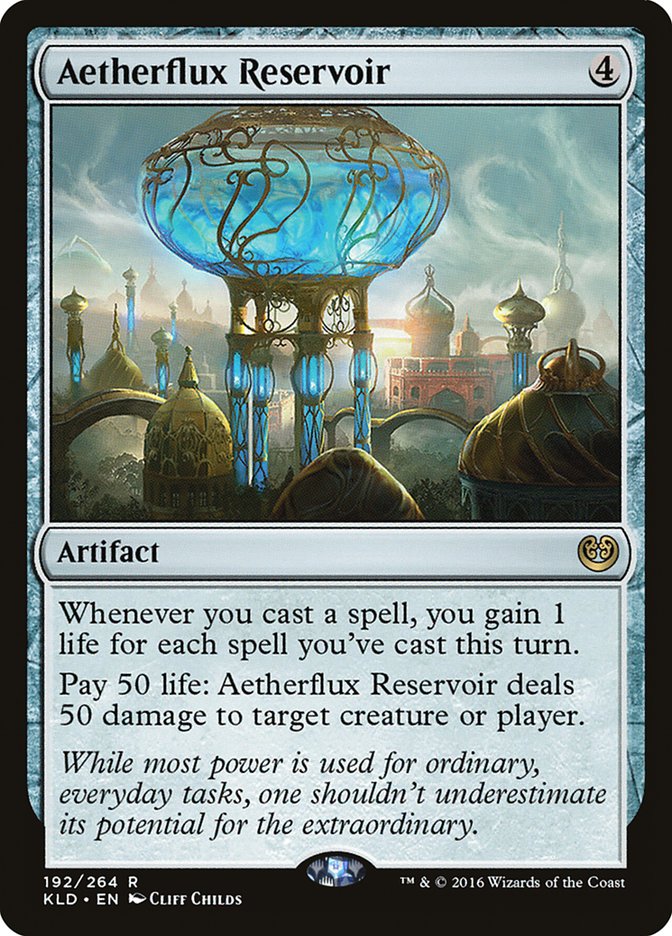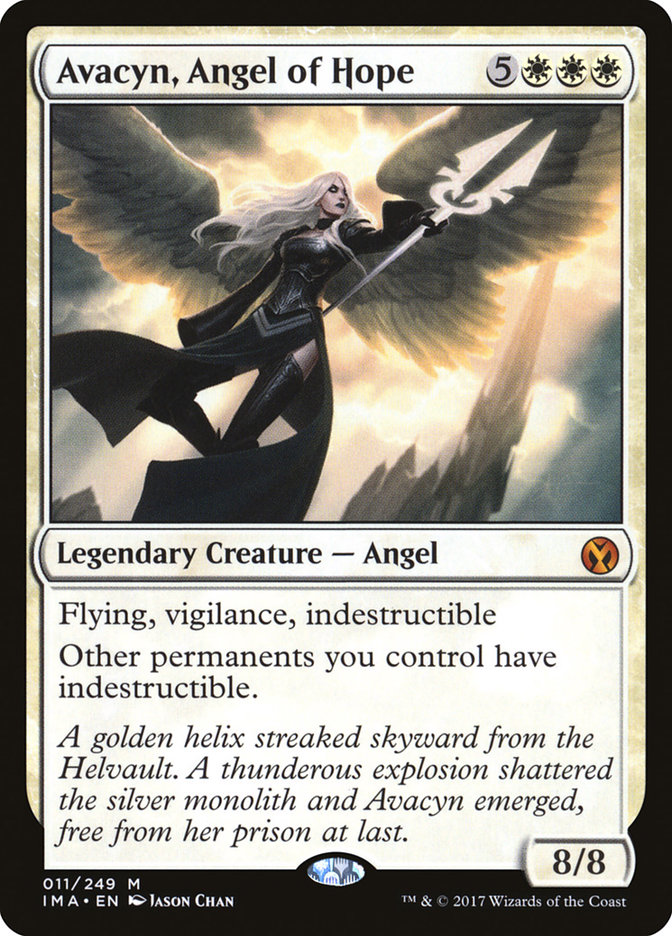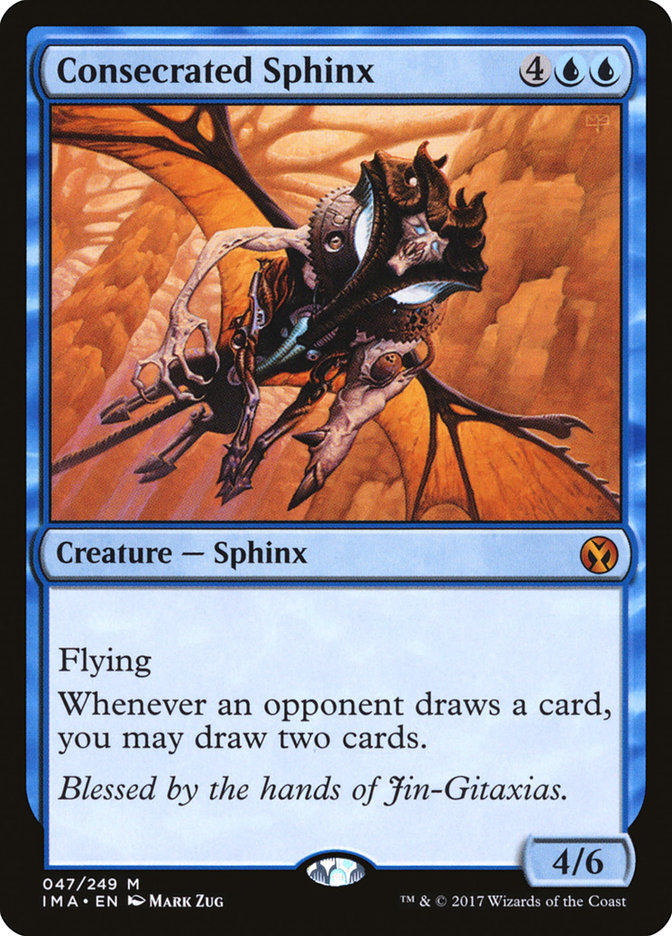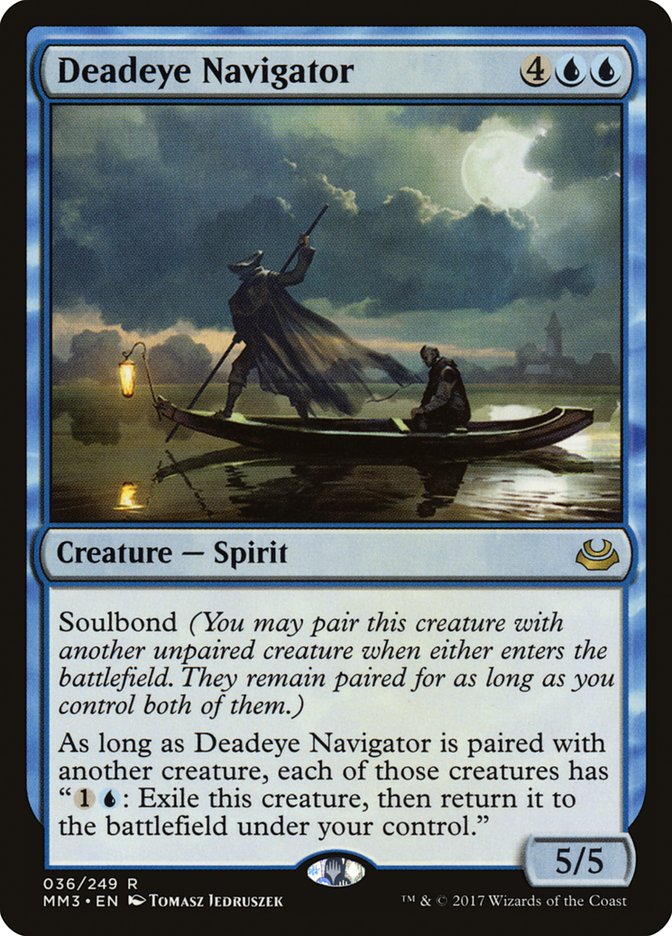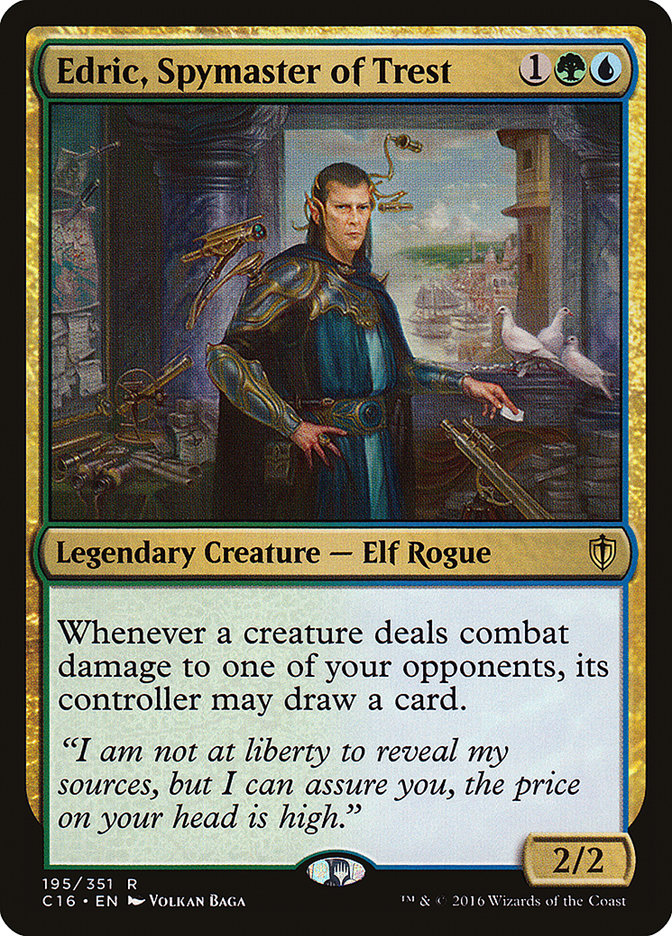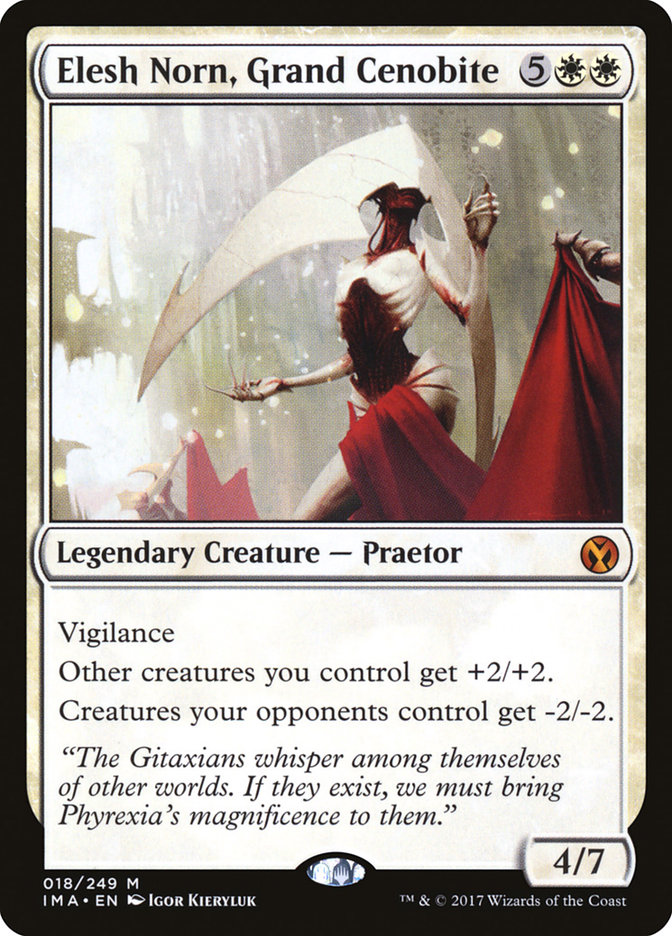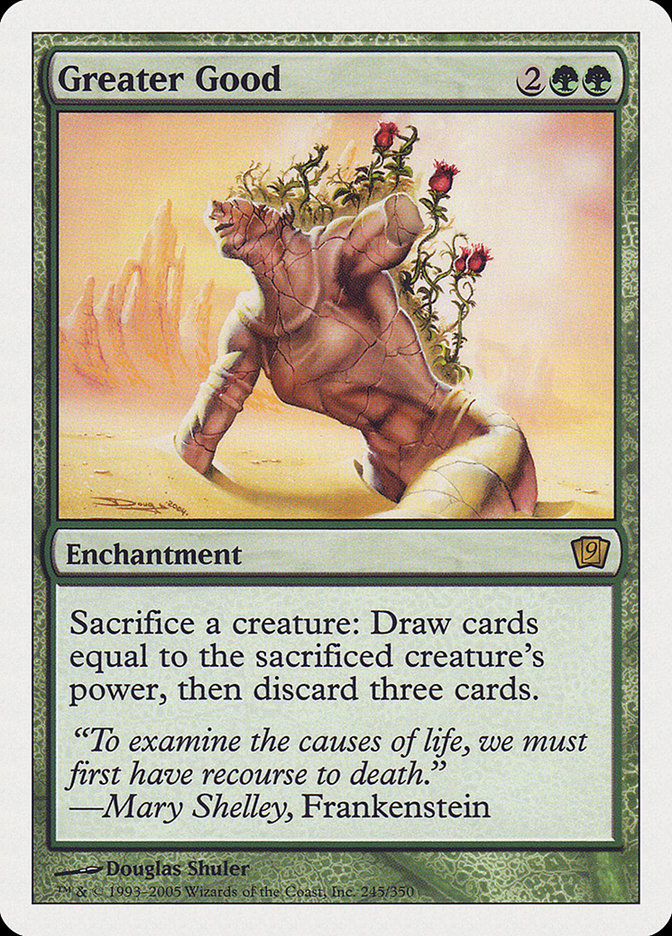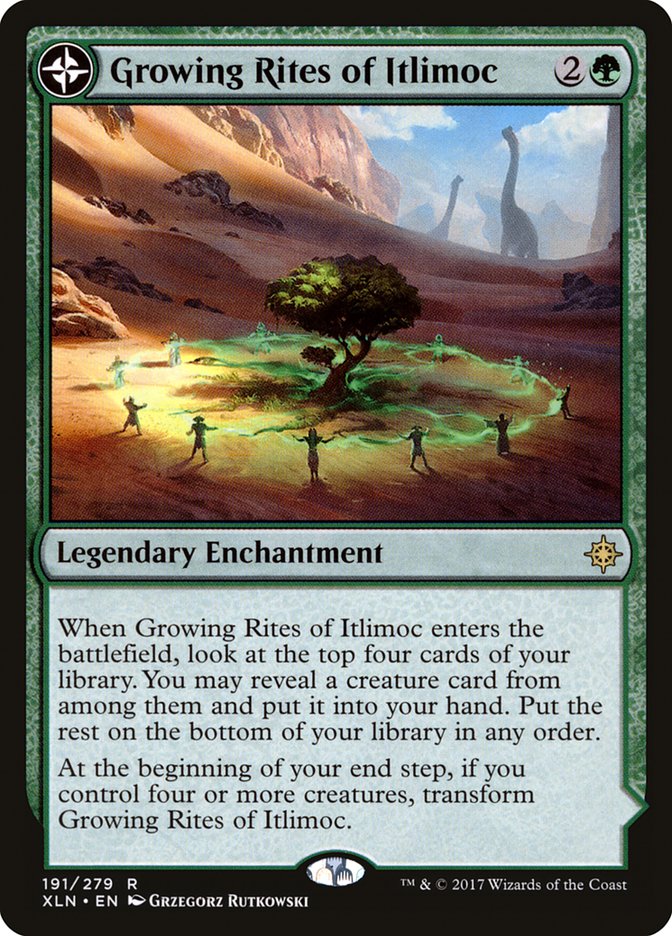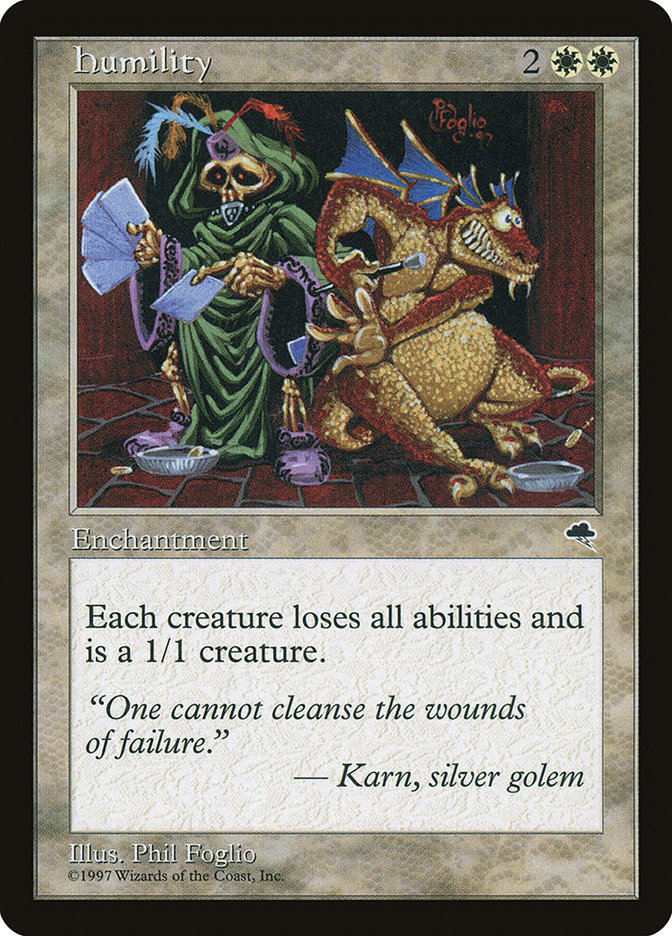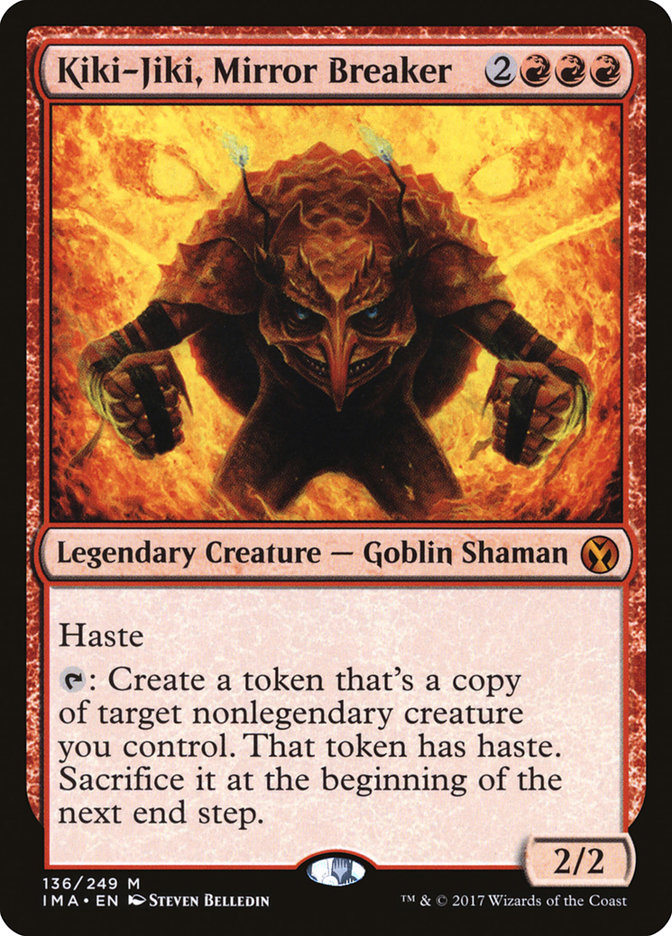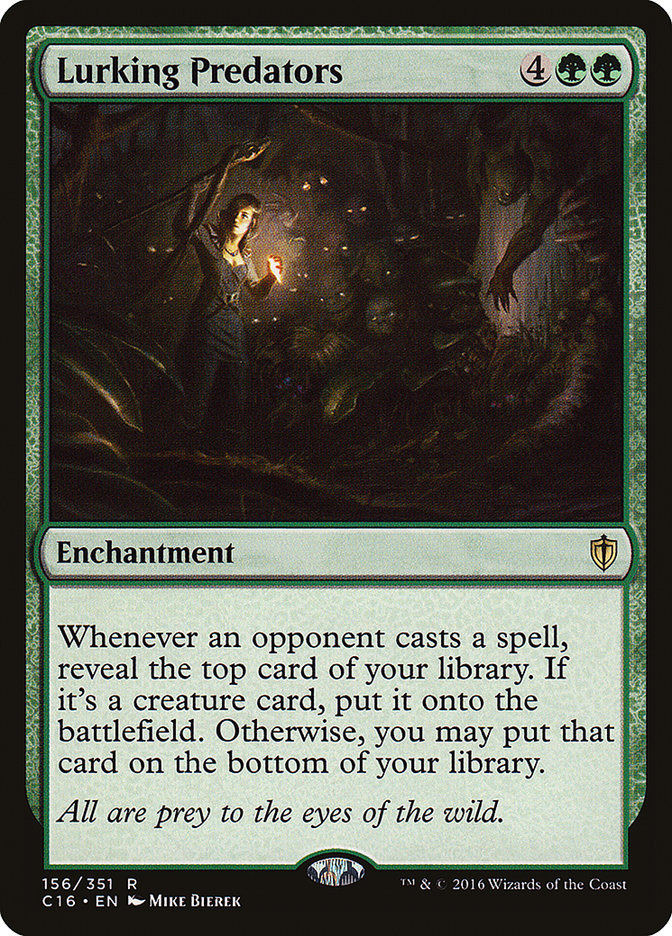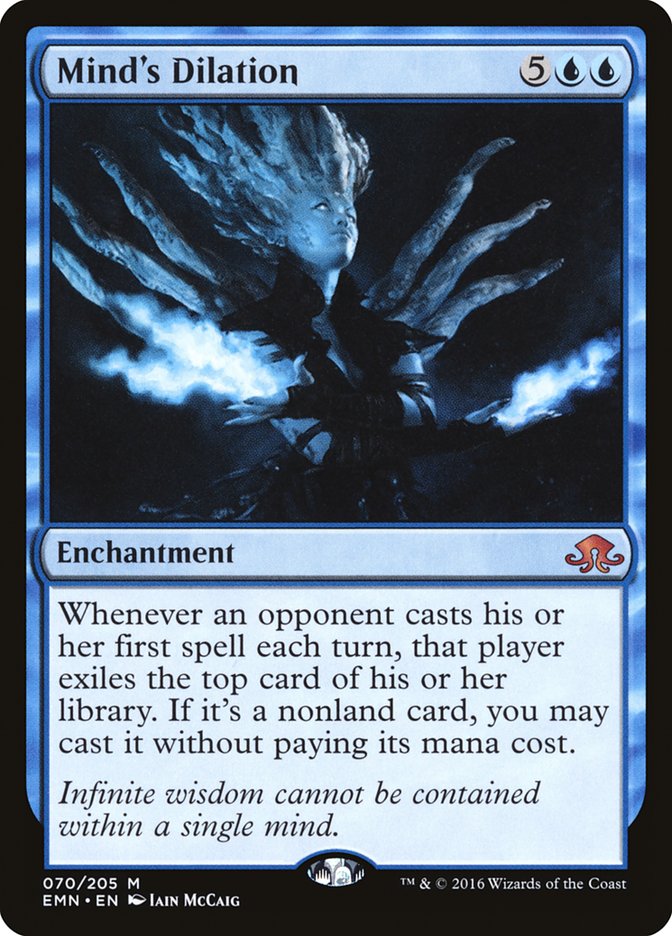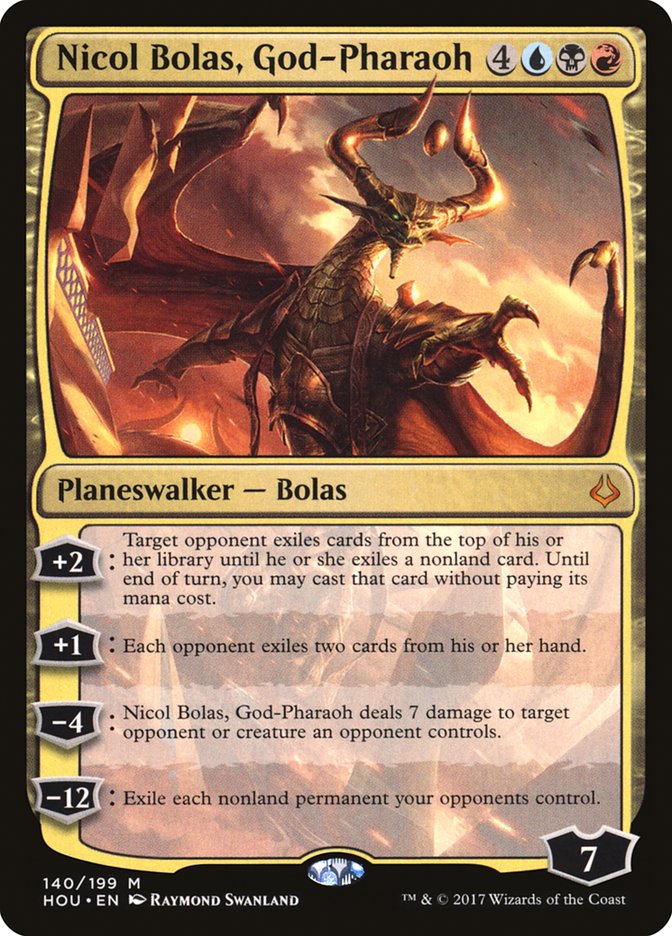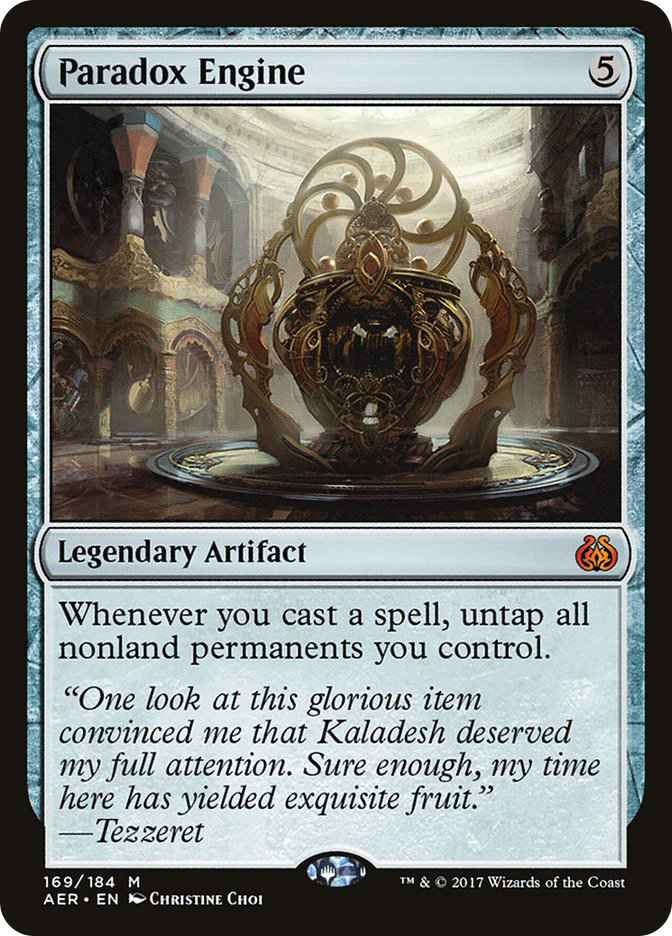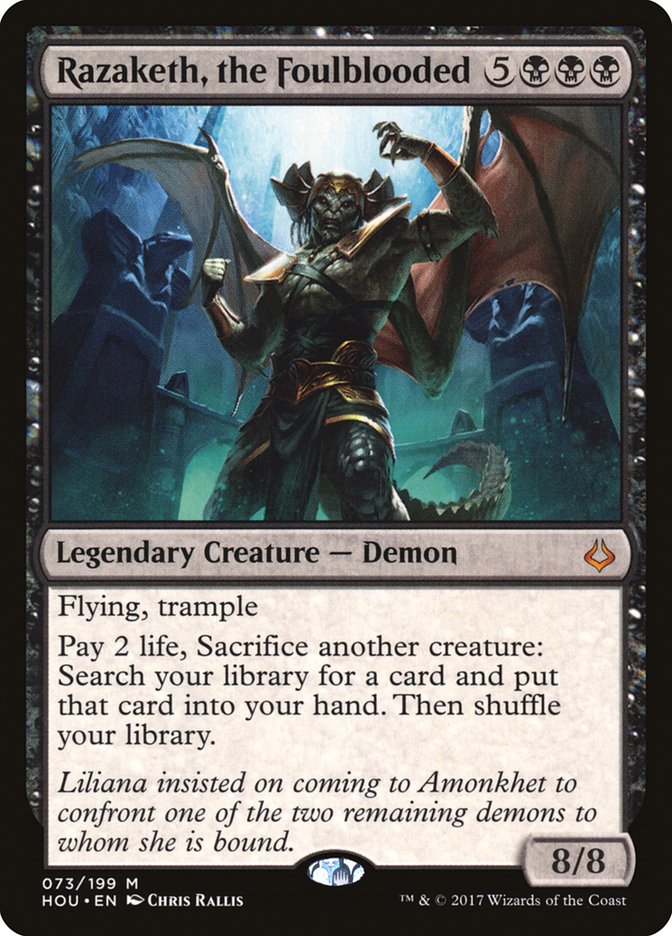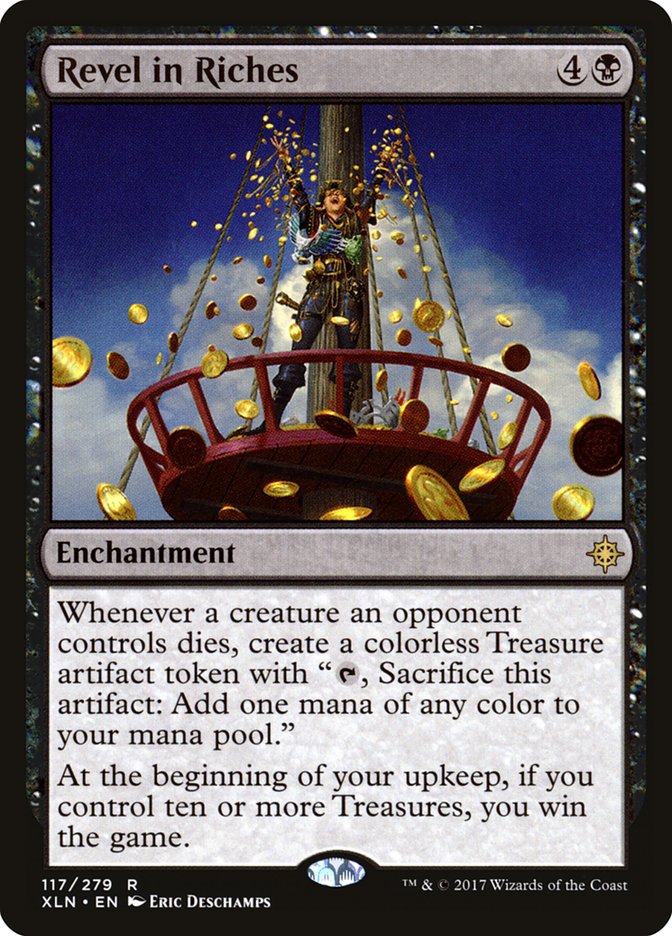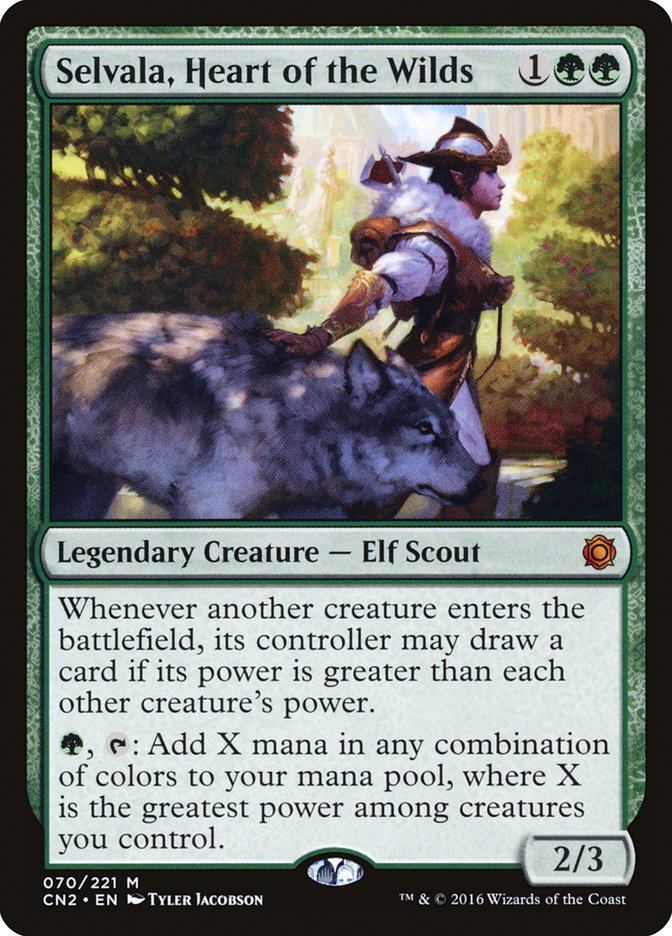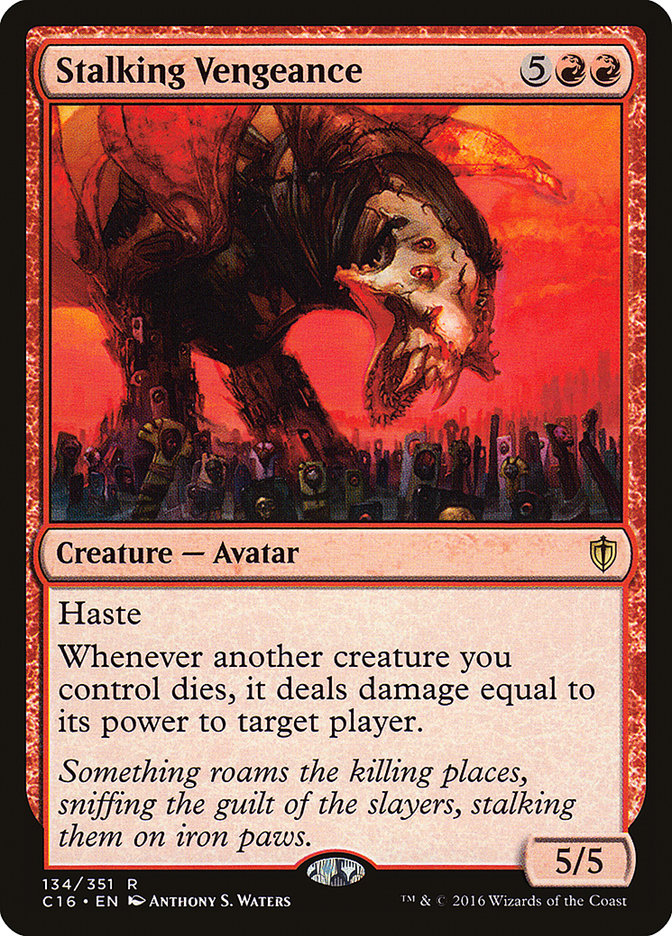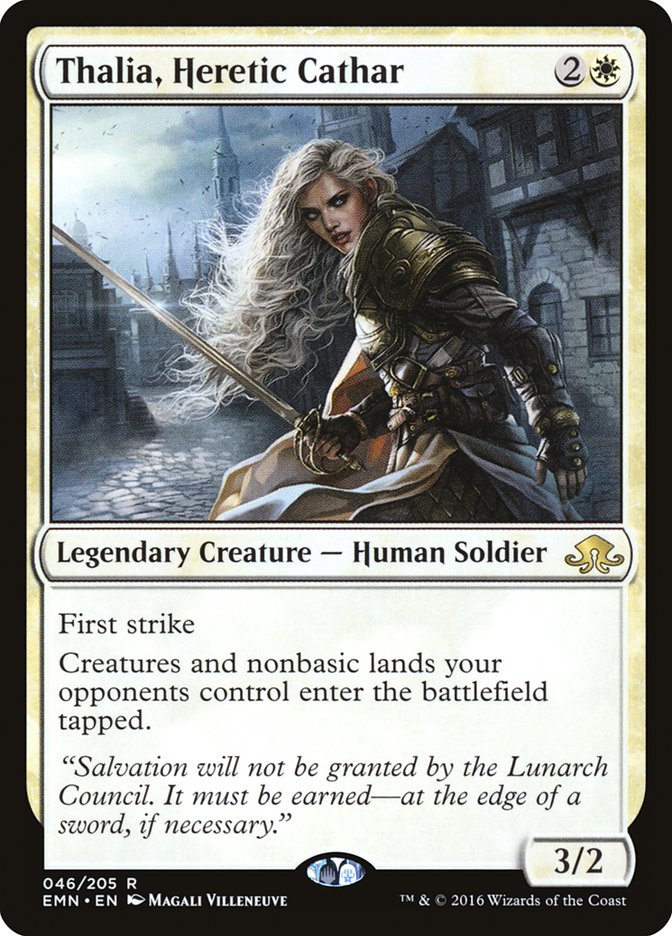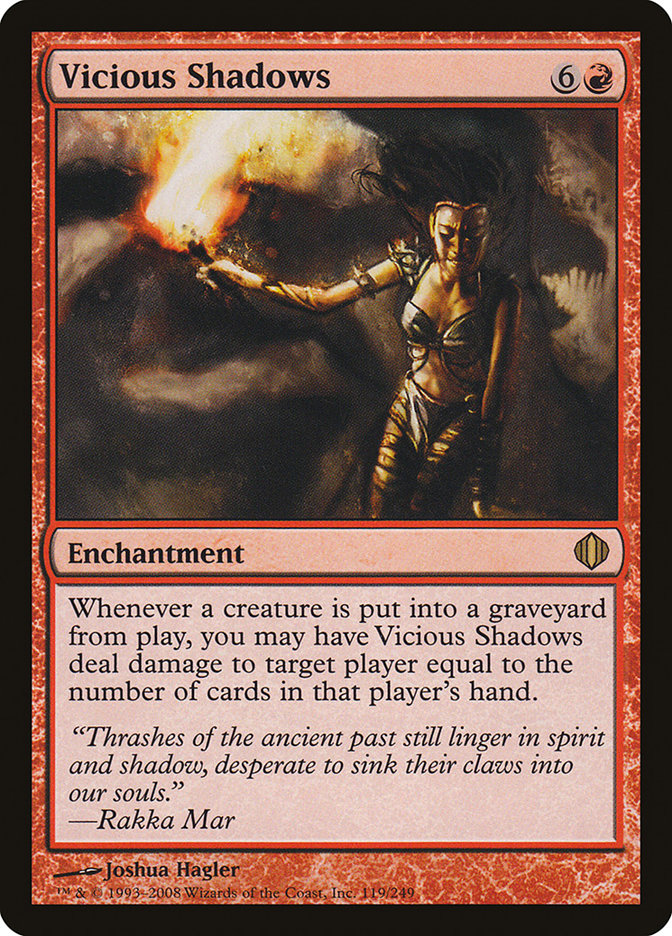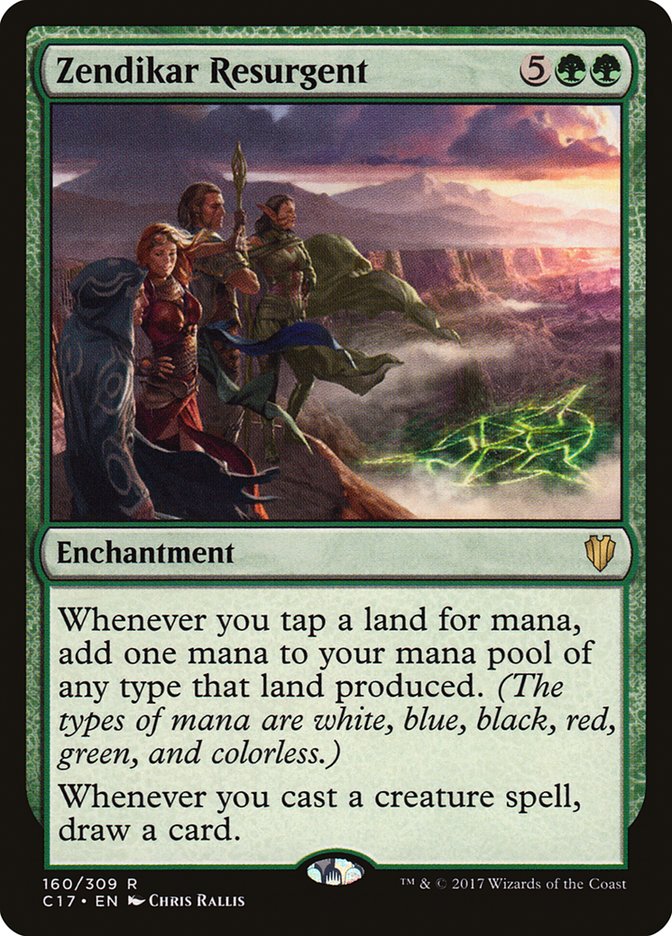There are lots of great cards in Commander. Some of them are under-the-radar choices that end up working out great every time you play them (here’s looking at you, Keep Watch). Many of them are well-known choices. Either way, when you have good cards and you’re going to do broken things with them, you simply can’t get angry when someone blows them up.
The Can’t Get Angry list is a feature we’ve run multiple times over the years, the last that I recall about three years ago. Obviously, it keeps getting bigger since more awesome new cards come out all the time.
I’m going to refine the definition a little for this iteration of the list. It won’t include cards that are designed to take the game away from other players, like Grand Arbiter Augustin IV or Winter Orb; if you need to be told you can’t get angry when people blow them up, I’m not sure me saying anything is going to make any difference. I’d put Iona, Shield of Emeria on that part of the list as well. I’m also not going to include any only- or mostly-used-for-arbitrarily-large-combo cards, like Palinchron or Sanguine Bond / Exquisite Blood. If racing to your arbitrarily large combo is the style of play your group likes, then more power to you—but if those kinds of things are what you’re up to, you really can’t get upset when someone cuts your legs out from under you.
This list is no kind of prelude to cards getting banned. They’re strong cards, even to some extent fun cards, which will have a major impact on the game. Although a few of them might be borderline, we don’t currently see any of them as so centralizing and format-warping to be worthy of getting the axe. I suppose you might think of this list this way: if someone else has them on the battlefield, are you likely to want to get rid of them? If so, turnabout is fair play.
There are 25 cards listed here; it’s not a comprehensive list, since there are easily 25 more and 25 more after that (and maybe even 25 more after those). They’re simply the ones that I thought were worth bringing up today.
When your life starts at 40, it’s not that difficult to get to 50. Aetherflux Reservoir even helps you get there. You’re probably playing it in a deck with plenty of other ways to gain life as well. I play it in my Trostani and Her Angels deck which routinely gets me over 200 life, so you can see how folks might get twitchy when they see the card. You can’t really blame anyone for not wanting you holding the Sword of Damocles over their heads.
“Blow up” won’t be quite the right answer with Avacyn, Angel of Hope, since she can’t be destroyed by normal means. Exile is certainly the most common way of dealing with her, although there are things like Hour of Devastation or Arcane Lighthouse which you can put into your toolbox to get rid of her indestructibleness. Most of what I see happening is someone bouncing Avacyn just so they can get rid of the remainder of the person’s battlefield. If she’s the only thing hanging around, she’s a lot less scary.
One of the most controversial cards for a while, though the furor over Consecrated Sphinx has died down. The issue with the card is that the draw is free; if it were like Mind’s Eye, with which you have to pay for each card you want to draw, there’s no discussion. I know it’s disappointing to lose your C-Sphinx when there could be shenanigans like you and someone else both having them, but you can see how everyone else in the game might not enjoy that quite so much.
Speaking of controversial cards, Deadeye Navigator has remained a kind of boogeyman for years. We don’t deny that it’s very strong. It’s also very expensive. We see it as more a high-value card than anything. The best way to not get your Deadeye Navigator not blown up is by pairing something less offensive with it, like maybe Elvish Visionary or even Solemn Simulacrum. Once you think about putting Draining Whelk with it, folks are going to get justifiably anxious and you should deal with them nuking your Navigato with good humor.
Edric, Spymaster of Trest is also the Test Master of Trest, because I think is examines other players’ threat assessment skills. It seems inoffensive, but you and I both know it’s not. It’s partially there to keep creatures off your face, but since you’re playing it, you know it’s there and you know you’re going to draw more cards than everyone else. They’ll get seduced by the idea of drawing their own cards, making them less likely to pay attention to the fact that they’re losing the race.
It’s quite possible that Elesh Norn, Grand Cenobite has already done a big part of its work when it first hit the battlefield, wiping out all of your opponents’ smaller creatures (or the whole of someone’s army if you first cast Sudden Spoiling). The ability to keep them from casting any small utility creatures will likely get under their skin; Elesh Norn’s buff of your own team will get on top of their life total. What’s worse for someone is that a second player’s Clone of some kind will make it even harder for them to keep around creatures. I’ve seen a game in which three players had a copy of Elesh Norn on the battlefield, and it was downright unpleasant for the fourth.
If you’re playing Gishath, Sun’s Avatar as your commander, everyone knows the Dinosaurs are coming. You’ll just have to deal with paying the additional two mana for it a few times. The good news for you is that you know you can cast it again; the bad news for them is that they’re going to have to do extra work. I suppose this idea isn’t unique to Gishath, but all good commanders. If you’re playing Gishash as one of 99, you have to be even more prepared emotionally to lose it, because your opponents will see it as their only shot.
Bene Supremo. Greatest Good. You’re going to get mileage out of Greater Good unless you blunder it out there before you have creatures (although I suppose if it’s Turn 4 and you only have more expensive creatures in your hand, that’s the way you have to go). The only time I regret playing the card is when someone else casts Elesh Norn. Really rains on my parade. I suppose I also don’t like it when someone else has Leyline of the Void on the battlefield. Still, I’m happy to take my chances and I’m content not to get salty when someone gets around to ending my reign of creature-sacrificing terror.
Most of the Ixalan block transform cards are pretty saucy, but Growing Rites of Itlimoc probably has the highest potential upside. It’s hardly broken, since the transformation is conditional, but still—if Gaea’s Cradle is a card you can’t get angry about (and it is; it just didn’t happen to make this list), then so is Growing Rites of Itlimoc (as well as the transformed version, Itlimoc, Cradle of the Sun).
I suppose Humility could be on the “take the game away from other players” list with Winter Orb and whatnot; I just wanted to hang it out here, because if you can be upset if someone gets rid of this, you’re simply a bad person.
We all know you’re up to no good with Kiki-Jiki, Mirror Breaker. Even when you claim otherwise, we’re on to you. Like with Deadeye Navigator, you might be able to keep it alive longer by not playing anything super=scary to go with it—but that’s probably not going to work out. Like I said, we’re all on to you already.
Getting stuff for free is grand. We all love free stuff. Still, our opponents don’t like the idea of having to give us free stuff just for doing the things that they’d like to do. You have to go all-in on the Lurking Predators plan; even when a juicy noncreature card comes up, you need to ship it to the bottom. The only possible exception is if the player to your immediate right has just cast their last spell and it looks like no one else can do anything before your turn. Then you probably draw the card and let Lurking Predators do the rest of the work later.
The card is really swingy; sometimes, it can change the tenor of a game immediately, especially on a relatively early turn, and sometimes, your whiff streak gets crazy (I remember going eight or nine in a row once). Still, the card has so much potential upside that you can’t blame the other folks for wanting to get rid of it.
Speaking of free stuff, Mind’s Dilation is sort of a fixed Lurking Predators for other players’ nonland permanents. If Lurking Predators had only the once-a-turn clause, it wouldn’t get played nearly as much. Mind’s Dilation, however, is far more likely to hit, since it’s not limited to creatures. Obviously, you probably don’t want to play an opponent’s Tranquility if it comes up—unless you’re really far behind on the enchantment race.
You really can’t get upset when someone gets rid of any Nicol Bolas card. Nicol Bolas, God-Pharaoh is just the most recent. The +2 ability is kind of absurd in that it ratchets up the loyalty counters while giving you a potentially huge effect. The +1 is an extreme version of card advantage. If you get to the ultimate, it’s game over, so you can understand why everyone else is likely to orc-pile onto your lovely God-Pharaoh.
The definition of value is getting twice what you paid for something. Panharmonicon nets you two lands from Solemn Simulacrum (but doesn’t duplicate the trigger on the way out), it kills two creatures with Big Game Hunter, and it gives opponents’ creatures -4/-4 with Massacre Wurm. Don’t even get me started with what happens with Avenger of Zendikar. While some folks might call Panharmonicon broken, I’d just call it relentless.
Of all the cards listed here, this one is as close to the borderline as it gets. What in our minds keeps it on this side of the line is that it’s not going to accidentally break any games. It’s a build-around card that can be pretty powerful if you build around it. Of course, once you play it, people will be able to see if that’s the case; if so, you can’t blame them for getting rid of it. Alternately, they could probably just get rid of your mana rocks and creatures. Otherwise, it’s a strong value card that untaps your team. So I guess it’s also the card that you could get maddest about someone blowing up if you’re playing it in the less broken way.
Repeatable tutoring is bad, mmmkay? Even at two life and a creature, Razaketh, the Foulblooded setting you up for something broken. The only way to convince people that this isn’t the case is . . . yeah, you’re never going to convince them. Unless we’ve played together a while, I wouldn’t believe you either.
At least it doesn’t also have lifelink. What kind of maniac would put that on a card where you paid life to draw more cards?
They can see it coming, so they might be likely to wait as long as possible before getting rid of Revel in Riches, which might be disappointing to you. That’s still no good reason to get upset. The best part of this card is the following actual ruling from Gatherer on Revel in Riches:
9/29/2017: If the second ability of Revel in Riches causes you to win the game, please refrain from throwing your Treasure tokens into the air as this may distract or injure other players.
Selvala, Heart of the Wilds is extremely strong and a card we’ve discussed at multiple Commander Rules Committee meetings. If it hits the table early, it can fuel some pretty insane plays. I actually had it in a deck with two other cards on this list, Lurking Predators and Mind’s Dilation. You can see how casting both of them relatively early could be absurd, especially if Lurking Predators gives you one of your huge monsters.
Later in the game, it’s not that big of a deal; we already expect big mana things to happen. I mean, I’d still get rid of it if I could, but it might not be as much a priority as removing it early in the game would be.
When destroying your creatures hurts people, they’re going to notice. Stalking Vengeance can be a one-shot kill card with creatures like Lord of Extinction or even Malignus if there’s an opponent with a relatively high life total. It’s not unreasonable for them to fear it. Or Clone it, but mostly still fear.
Creatures entering the battlefield tapped isn’t all that horrible, since most of them don’t have haste anyway. Blind Obedience is on the bigger “Can’t Get Angry” list because of its combination of abilities, which is why Thalia, Heretic Cathar is here. Somewhere around half of everyone else’s lands entering the battlefield tapped is going to slow their roll enough for them to take umbrage. Notice that umbrage is a thing that people only take; they never give it.
It’s not just The Scarab God’s first ability, which is a build-around (obviously, that build has to be Zombies), it’s the combination of abilities. The graveyard control The Scarab God gives you is also significant (and it makes more Zombies). Your opponents will of course need to be resourceful to truly get rid of The Scarab God, since its triggered ability will put it back into your hand unless they exile it or remove it from your graveyard.
Vicious Shadows is an old classic I truly didn’t fear the first time I saw it. Fellow RC member Toby Elliott had it in his Ulasht, the Hate Seed deck. He cast it, we all shrugged, and he grinned. We were all soon dead, and got the point. It’s expensive, but it can be devastating, especially since you can target anyone with it, not just the player whose creature(s) died. It’s great protection for you to play against people killing your creatures (so is Rage Thrower, if you’re interested), and it’s a great idea for them to send it on its way.
All the additional mana cards are on the bigger list, but Zendikar Resurgent is special because it gives you more things to cast with all that mana you’ll have. Sure, it only gives you a card when you cast creature spells, but who isn’t casting a bunch of them anyway? Maybe it’d be a little less frightening if it only gave you extra mana for creature spells, but that wording is too awkward to even imagine.
***
As I said before, this list is hardly exhaustive. It’s tilted toward a bunch of newer cards while not ignoring some of the classics. The big-picture message is that getting angry when someone blows up your stuff is a bad idea.
Never hate your enemies. It clouds your judgment.
This week’s Deck Without Comment is Steam-Powered Merieke Do-Over.
Creatures (26)
- 1 Solemn Simulacrum
- 1 Keiga, the Tide Star
- 1 Jushi Apprentice
- 1 Weathered Wayfarer
- 1 Dimir Doppelganger
- 1 Wall of Reverence
- 1 Ethersworn Adjudicator
- 1 Enigma Sphinx
- 1 Archon of Redemption
- 1 Kozilek, Butcher of Truth
- 1 Sun Titan
- 1 Massacre Wurm
- 1 Suture Priest
- 1 Phyrexian Metamorph
- 1 Phyrexian Ingester
- 1 Drogskol Reaver
- 1 Teysa, Envoy of Ghosts
- 1 Burnished Hart
- 1 Silumgar, the Drifting Death
- 1 Wardscale Dragon
- 1 Ojutai, Soul of Winter
- 1 Dragonlord Silumgar
- 1 Sunscorch Regent
- 1 Pristine Skywise
- 1 Hidden Dragonslayer
- 1 Dragonlord Ojutai
Planeswalkers (2)
Lands (36)
- 1 Forbidden Orchard
- 4 Plains
- 5 Swamp
- 8 Island
- 1 Underground Sea
- 1 Scrubland
- 1 Minamo, School at Water's Edge
- 1 Temple of the False God
- 1 Maze of Ith
- 1 Tower of the Magistrate
- 1 Watery Grave
- 1 Godless Shrine
- 1 Hallowed Fountain
- 1 Arcane Sanctum
- 1 Reliquary Tower
- 1 Drowned Catacomb
- 1 Glacial Fortress
- 1 Bojuka Bog
- 1 Vault of the Archangel
- 1 Temple of Silence
- 1 Arcane Lighthouse
- 1 Command Beacon
Spells (35)
- 1 Sol Ring
- 1 Time Stop
- 1 Aura of Silence
- 1 Darksteel Ingot
- 1 Future Sight
- 1 Decree of Pain
- 1 Staff of Domination
- 1 Crawlspace
- 1 Rhystic Study
- 1 Copy Enchantment
- 1 Orzhov Signet
- 1 Magewright's Stone
- 1 Phthisis
- 1 Sudden Spoiling
- 1 Chronomantic Escape
- 1 Thousand-Year Elixir
- 1 Obelisk of Esper
- 1 Armillary Sphere
- 1 Tainted Sigil
- 1 Mimic Vat
- 1 Blue Sun's Zenith
- 1 Mycosynth Wellspring
- 1 Command Tower
- 1 Swiftfoot Boots
- 1 Druidic Satchel
- 1 Supreme Verdict
- 1 Illusionist's Bracers
- 1 Riot Control
- 1 Utter End
- 1 Aether Gale
- 1 Dragonlord's Prerogative
- 1 Hallowed Moonlight
- 1 Grip of Desolation
- 1 Anguished Unmaking
- 1 Implement of Examination

Check out our comprehensive Deck List Database for lists of all my decks:
SIGNATURE DECKS
Purple Hippos and Maro Sorcerers; Kresh Into the Red Zone; Halloween with Karador; Dreaming of Intet; You Did This to Yourself.
THE CHROMATIC PROJECT
Mono-Color
Heliod, God of Enchantments; Thassa, God of Merfolk; Erebos and the Halls Of The Dead; Forge of Purphoros; Nylea of the Woodland Realm; Karn Evil No. 9.
Guilds
Lavinia Blinks; Obzedat, Ghost Killer; Aurelia Goes to War; Trostani and Her Angels; Lazav, Shapeshifting Mastermind; Zegana and a Dice Bag; Rakdos Reimagined; Glissa, Glissa; Ruric Thar and His Beastly Fight Club; Gisa and Geralf Together Forever.
Shards and Wedges
Adun’s Toolbox; Angry, Angry Dinos; Animar’s Swarm; Borrowing Stuff at Cutlass Point; Ikra and Kydele; Karrthus, Who Rains Fire From The Sky; Demons of Kaalia; Merieke’s Esper Dragons; Nath of the Value Leaf; Rith’s Tokens; The Mill-Meoplasm; The Altar of Thraximundar; The Threat of Yasova; Zombies of Tresserhorn.
Four-Color
Yidris: Money for Nothing, Cards for Free; Saskia Unyielding; Breya Reshaped.
Five-Color
Partners
Tana and Kydele; Kynaios and Tiro; Ikra and Kydele.
THE DO-OVER PROJECT
Animar Do-Over; Glissa Do-Over; Karador Do-Over; Karador Version 3; Karrthus Do-Over; Kresh Do-Over; Steam-Powered Merieke Do-Over; Lord of Tresserhorn Do-Over; Mimeoplasm Do-Over; Phelddagrif Do-Over; Rith Do-Over; Ruhan Do-Over.
If you’d like to follow the adventures of my Monday Night RPG group (in a campaign that’s been alive since 1987) which is just beginning the saga The Lost Cities of Nevinor, ask for an invitation to the Facebook group “Sheldon Menery’s Monday Night Gamers.”


